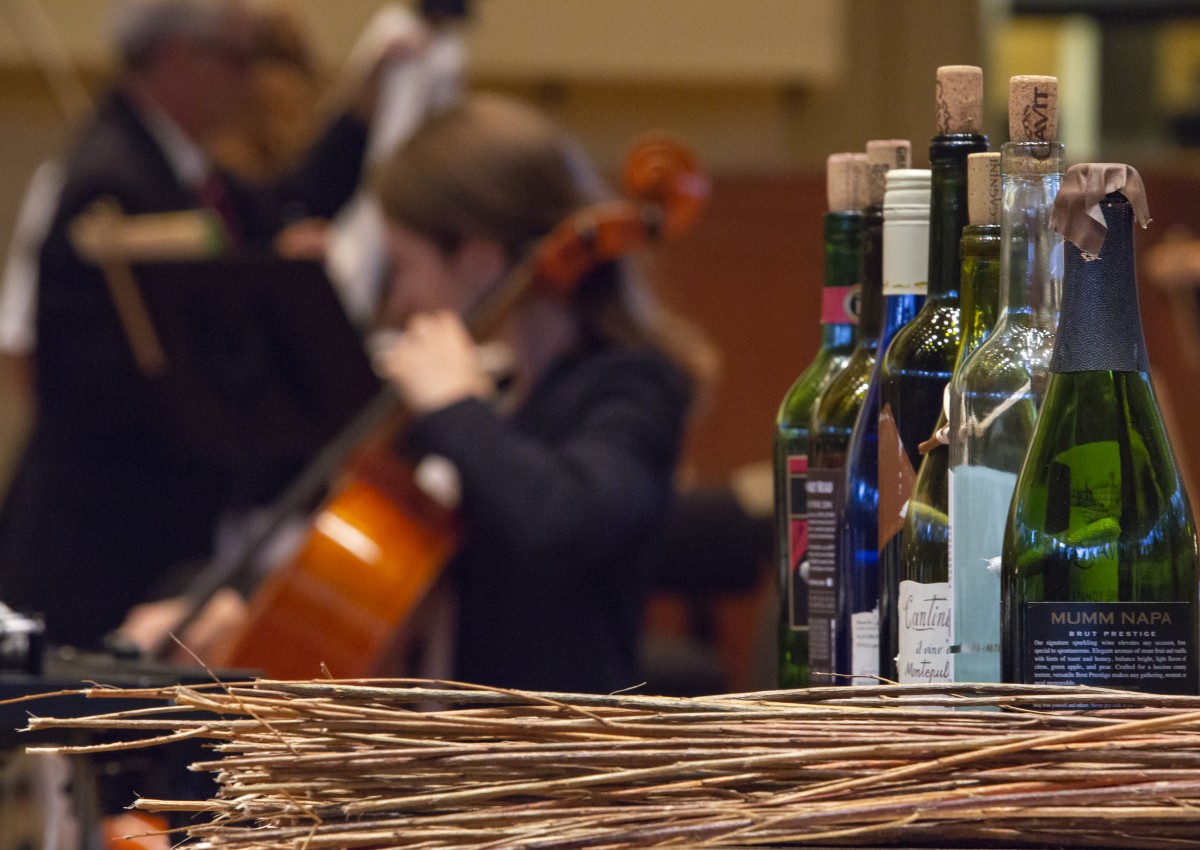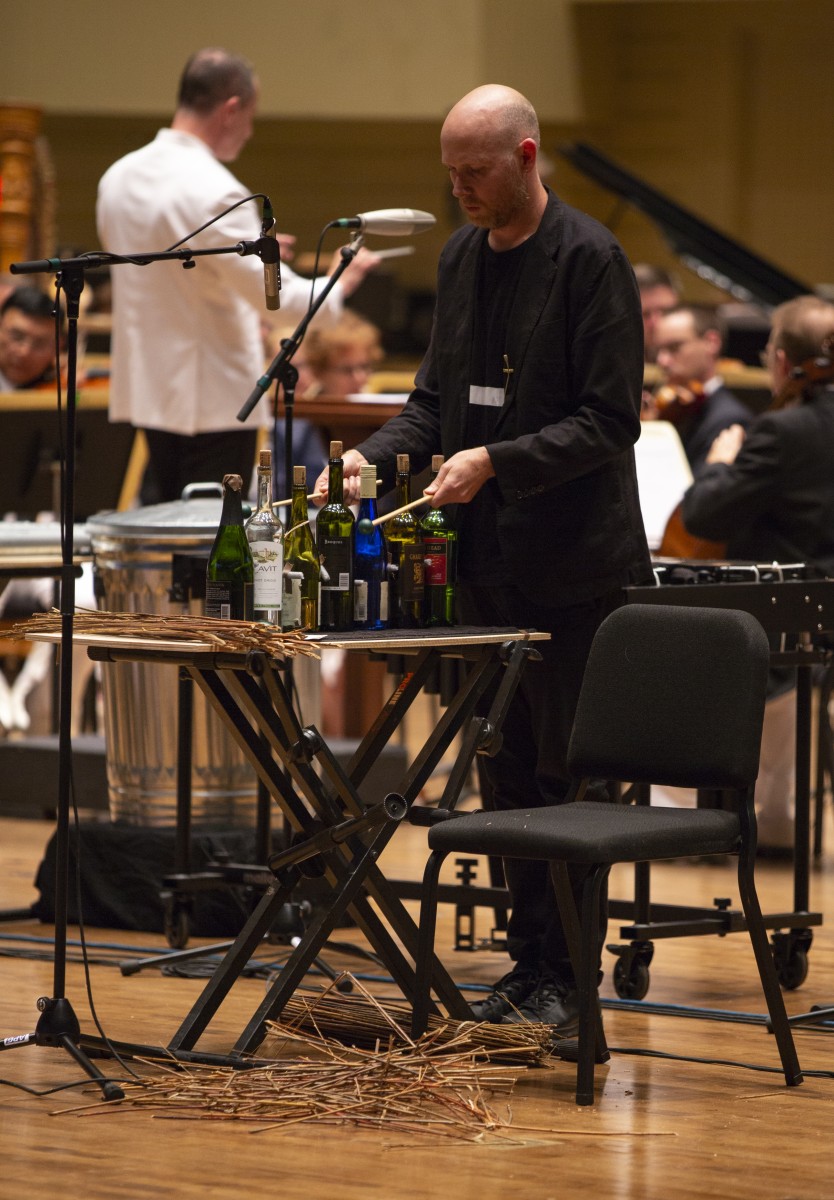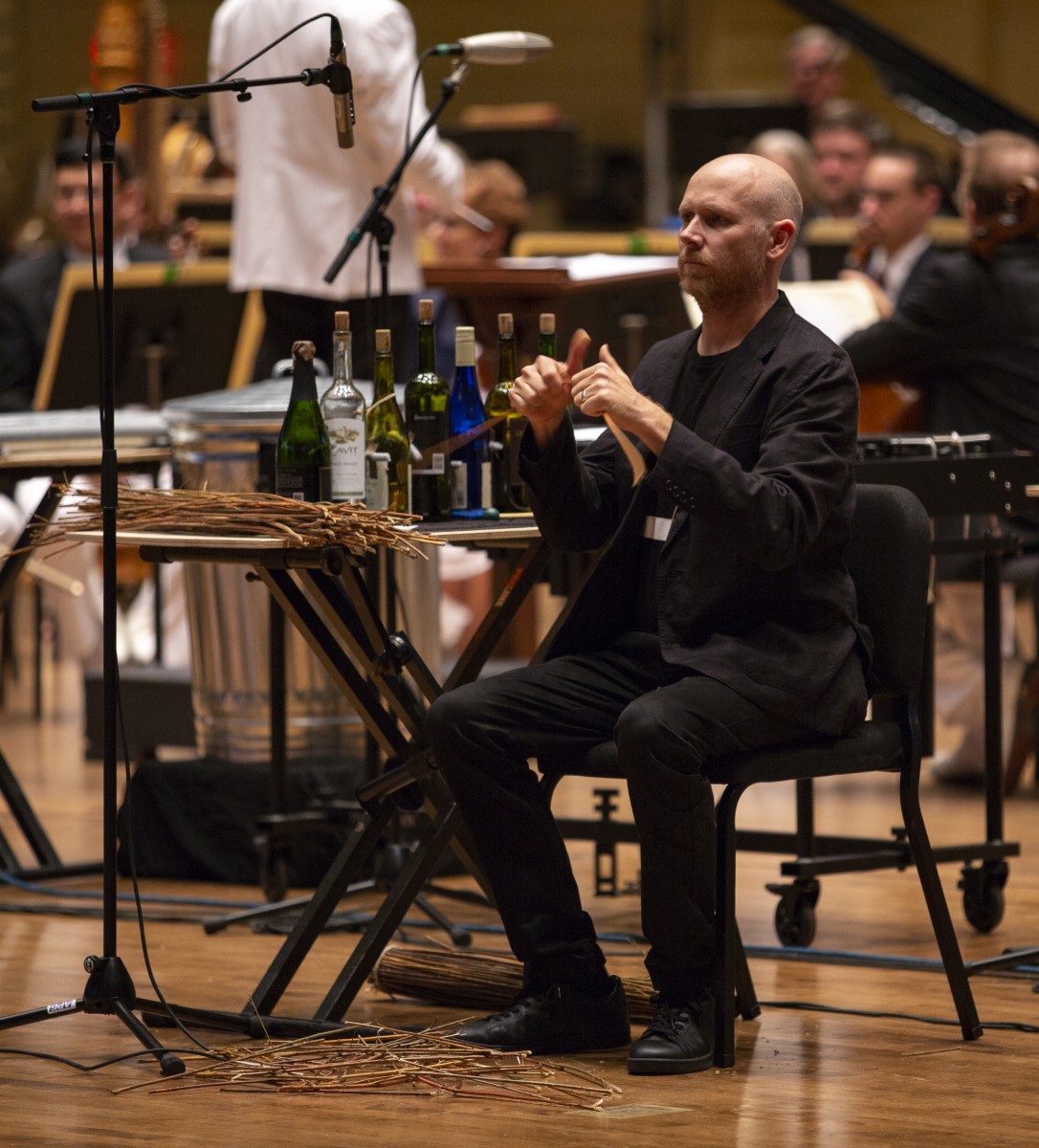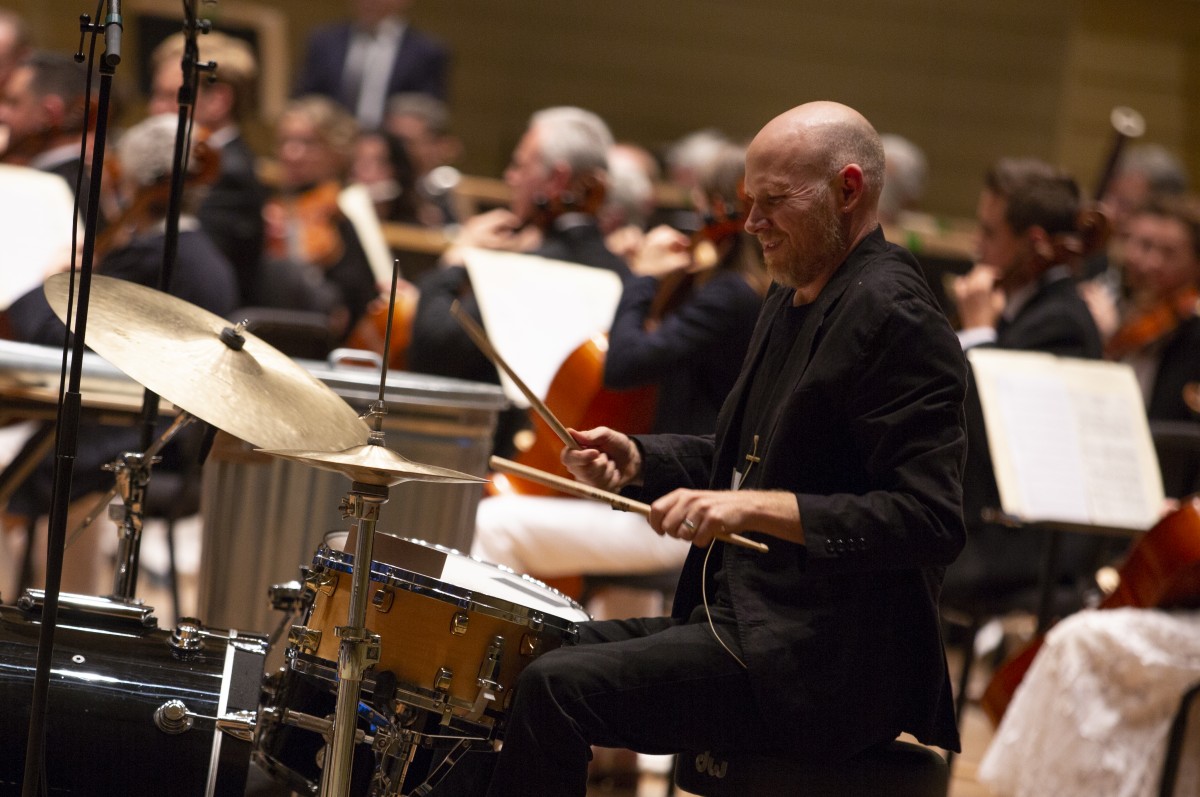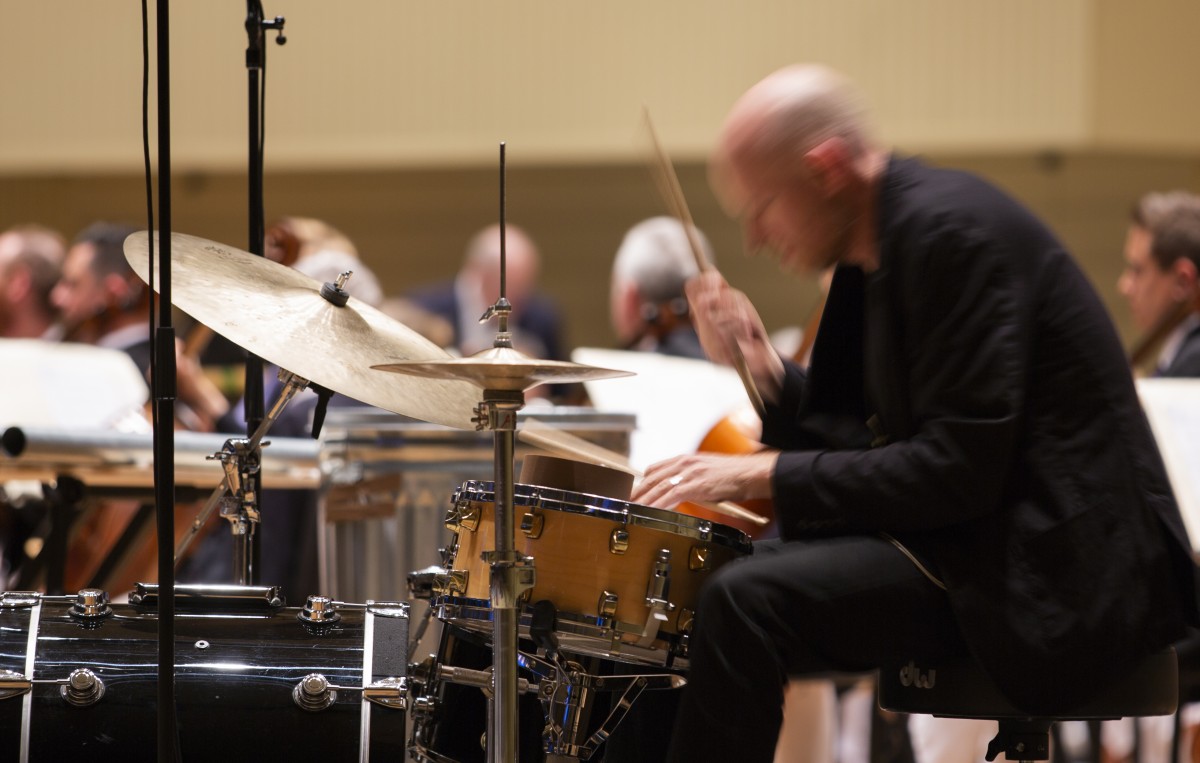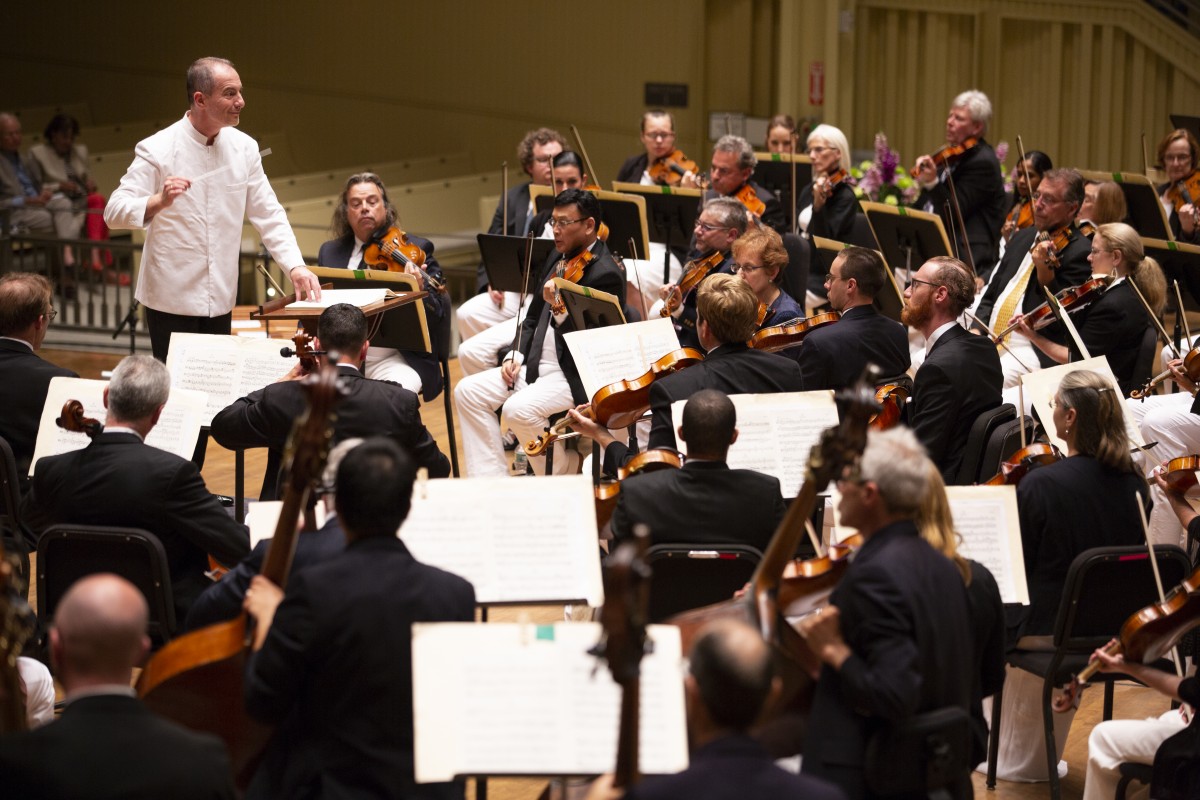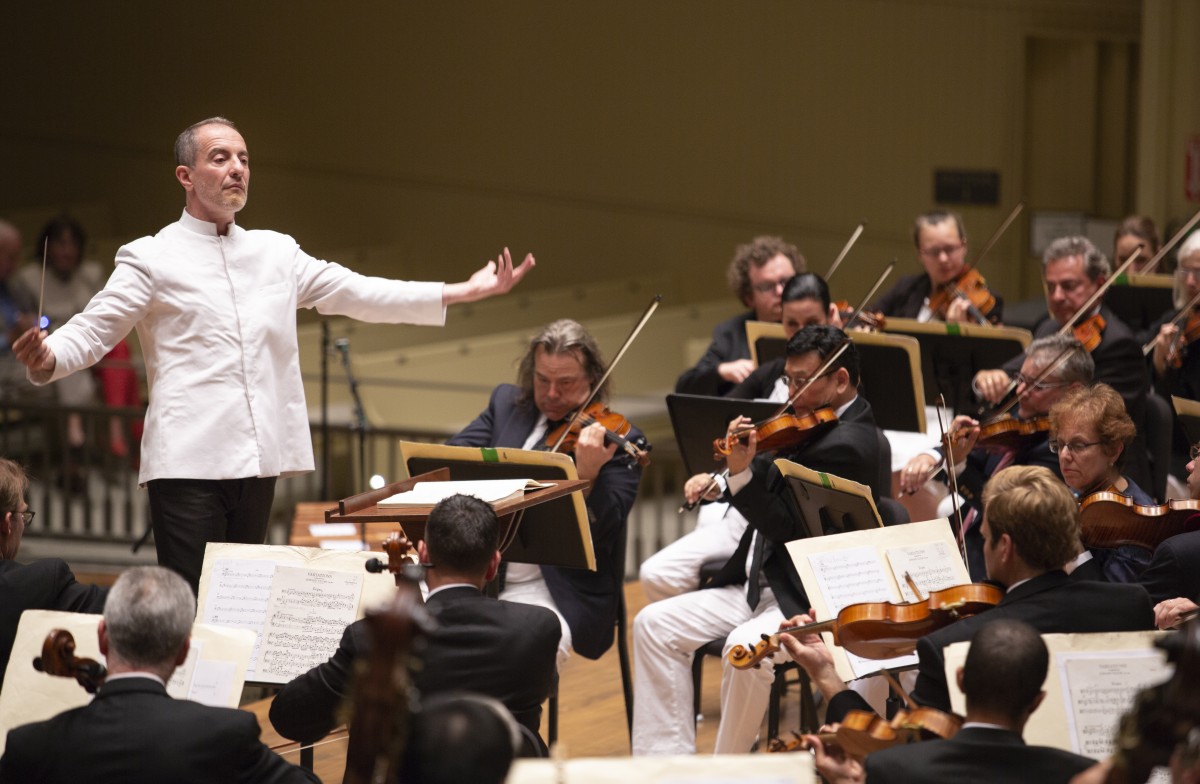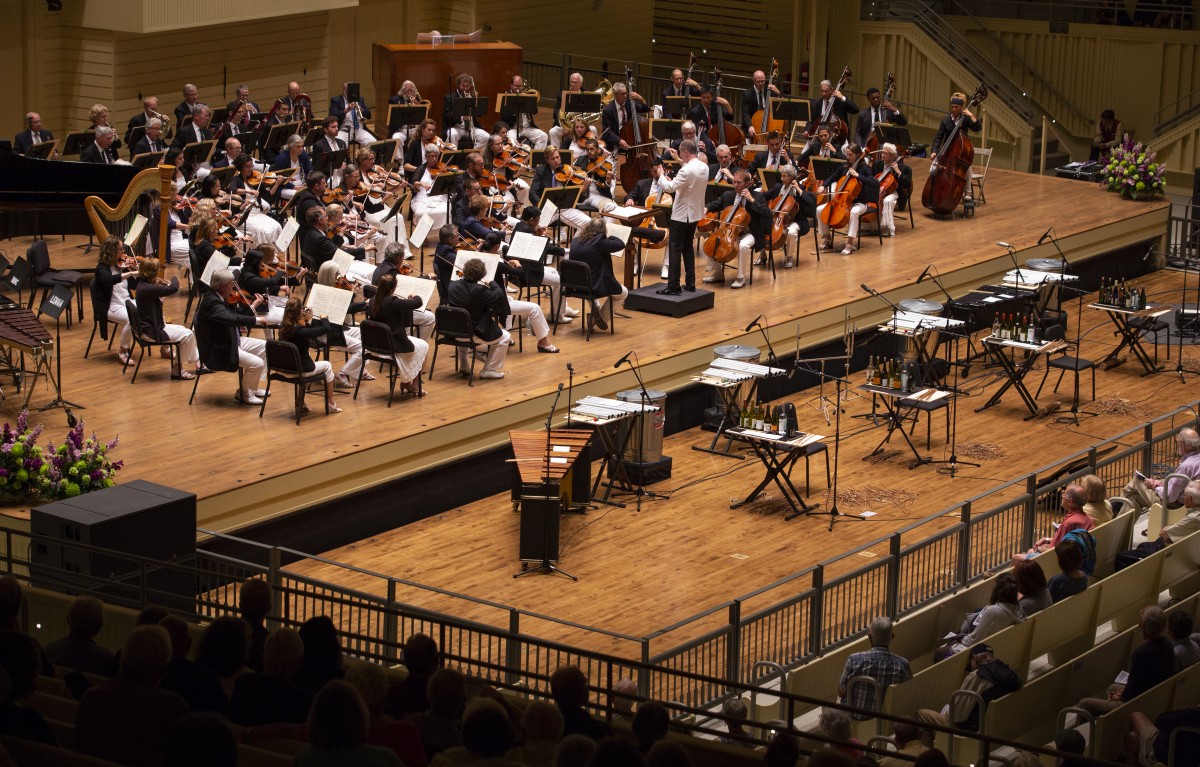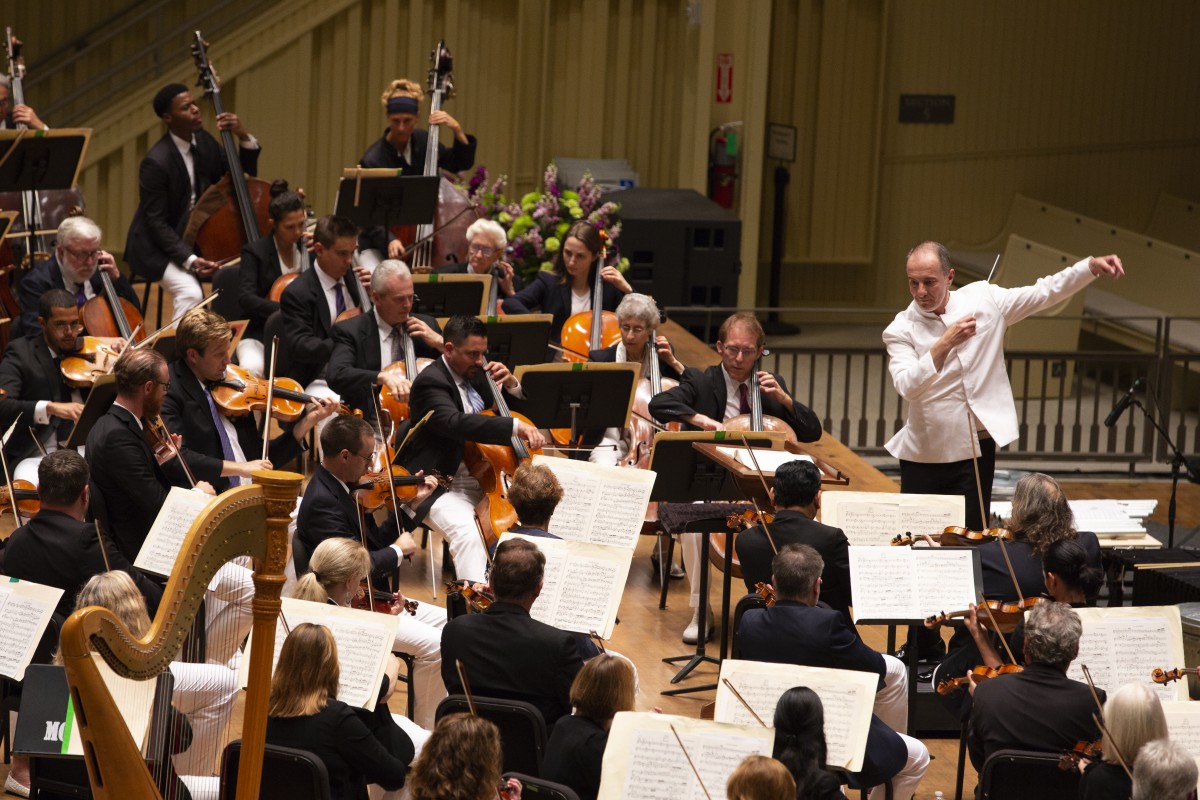Review by Tom Di Nardo
One consistent resource for the Chautauqua Symphony Orchestra’s season is the imaginative programming by music director Rossen Milanov. His balance of standard works, as well as unfamiliar ones offered to his open-minded audience, means a season packed with the familiar and the surprising.
Tuesday night’s CSO concert on July 31 was a perfect example, with Milanov’s choice of David Lang’s unusual “man made,” played by the renowned quartet Sō Percussion contrasting with Elgar’s repertory standard, the Enigma Variations.
Milanov’s access to programming ideas with artists through his other podium venues is another major plus — in this case, his role with the Princeton Symphony Orchestra. Last year, the inter-arts show Mango Suite was scored by Princeton composer Derek Bermel, and Sō Percussion functions as resident artists at the university. We heard a stunning preview of the quartet’s diversity on Monday, July 30, in Elizabeth S. Lenna Hall, playing two works also connected with Princeton, one actually for flower pots and mallets.
The four-movement “man made,” written for this ensemble by its longtime collaborator Lang, was given a 2013 premiere in London and replayed by the Los Angeles Philharmonic a year later.
The concept of something uniquely discovered, embellished and enlarged to wider acceptance was the gestation of Lang’s title “man made.” To have the quartet use ordinary objects to make an infinite range of sounds, which could be echoed, imitated and translated into typical orchestral timbres, was his concept. Lang goes a step further than minimalism, in which repetition becomes either hypnotic or boring and uses repeated fragments with tiny shifts, eventually morphing into more traditional sounds by the orchestra’s instruments.
A percussion quartet is necessarily theatrical, and “man made” began with the four players — Eric Cha- Beach, Josh Quillen, Adam Sliwinski and Jason Treuting — facing us on four chairs, snapping twigs in unison and dropping them into piles. (Not just any twigs — specially purchased Asian willow for sound consistency). The orchestra slowly picked up the fragments in this six-minute section, followed by a movement with tuned wine bottles in a mesmerizing kaleidoscope of sounds with orchestral outbursts reflecting the rhythm.
A third, extended section played on tuned metal pipes and four steel trash cans was an extended, at first sublime, cacophony. This time, no subtle variations of Lang’s aggressive rhythms were apparent, at least to these ears, and it seemed too long, without the orchestra adding much flavor. The powerful finale featured the musicians on marimba, vibraphone, drums and a drum kit with a throbbing, repeated riff over pizzicato string accompaniment. As the work developed with its tiny sounds to this final explosion, the quartet finally took over, and the piece suddenly ended without a resolution that it didn’t seem to need.
These four remarkable musicians of Sō Percussion perform as if having a connected spirit, playing as one harmonious entity. Thanks to their virtuosity, the realm of the percussion repertoire has been enlarged, and they prove that provocative and compelling music can be made with everyday objects — as well as their imposing mallet instruments. All told, this was a fascinating project that mostly worked and one which excited the enthusiastic audience.
The Amphitheater’s orchestra pit, full of percussion instruments, was swiftly lowered, so the Elgar could swiftly follow without distraction or time spent in moving them off the stage.
Elgar’s Enigma Variations, a majestic work that jump-started his career, allowed Milanov and the CSO to explore a rich palette of colors, rhythms and moods. He mentioned the fact that Elgar offered a detective story about the “Enigma” in the title; though two distinct fragments begin the work, neither are the hidden theme. Florid theses have been written about what it is, with Milanov mentioning some of the more far-fetched theories of hidden tunes.
But the mystery was sparked by Elgar’s own words:
“The Enigma I will not explain — its ‘dark saying’ must be left unguessed, and I warn you that the connexion (sic) between the Variations and the Theme is often of the slightest texture; further, through and over the whole set another and larger theme ‘goes’, but is not played. … So the principal Theme never appears, even as in some late dramas (…) the chief character is never on the stage.”
In one story, an amateur cellist was once asked to play notes indicated by numbers placed on Elgar’s piano keys. After Elgar removed the numbers, he said that the “Enigma” theme had been played, but the cellist did not remember the sequence.
Two other Elgar quirks have also inflamed amateur musicologists. He was an eminent cryptographer who had unlocked a supposedly insolvable encryption cipher. And he also was a famous practical joker, who may have thought he’d drive people crazy looking for the imaginary.
We can simply listen to this masterpiece as pure music, or follow the musical sketches of his circle of close acquaintances: his wife Alice, an amateur musician, an Oxford don, a Gloucestershire squire, a poet, a female friend, an architect, a country house, his publisher, a possible female dalliance (who he said definitely would know what the “Enigma” was), a bulldog, that amateur cellist, a noble lady and finally, Alice’s pet name for him, Edoo. They’re full of joyfulness and ingenious scoring, giving a conductor a wealth of rhythmic challenges and an orchestra many chances to shine.
After the melodies in the opening, Milanov brought out the delicacy of his wife’s portrait, the don’s formality portrayed by the bassoon, and the pensiveness of his female friend, “Ysobel.” The orchestra built the most famous variation, “Nimrod,” with real glory, an exalted rendition of one of the most magnificent moments in all music.
A mercurial lightness depicted his friend “Dora,” followed by more picture-painting bassoon work as the boisterous bulldog falls into the river. A lovely cello solo by principal Jolyon Pegis, with eventual engagement by the whole section, violas and second violins, was Elgar’s reflection of the amateur cellist.
The throb of shipboard engines carrying the noble lady (requiring long trills of sticks on the drum edge by a percussionist with strong wrists) purred behind lovely clarinet playing. Bold, exuberant orchestral sound, with plenty of solid brass and percussion playing, was Elgar’s portrait, and the finale sewed up the threads and allowed the organ to add to the triple fortissimo in the final minutes.
Milanov was right; you could follow and recognize all the details, or just sit back and enjoy one of the marvels of British music. The CSO played with resilience, rhythmic flexibility and rich, glorious sound in this masterwork. One thing is certain: Milanov has this work in his heart as well as in his baton.
Tom Di Nardo has written on the arts for the Philadelphia Daily News since 1982. His recent books include Listening to Musicians: 40 Years of the Philadelphia Orchestra and Performers Tell Their Stories: 40 Years Inside the Arts. He has also written Wonderful World of Percussion: My Life Behind Bars, a biography of legendary Hollywood percussionist Emil Richards.


